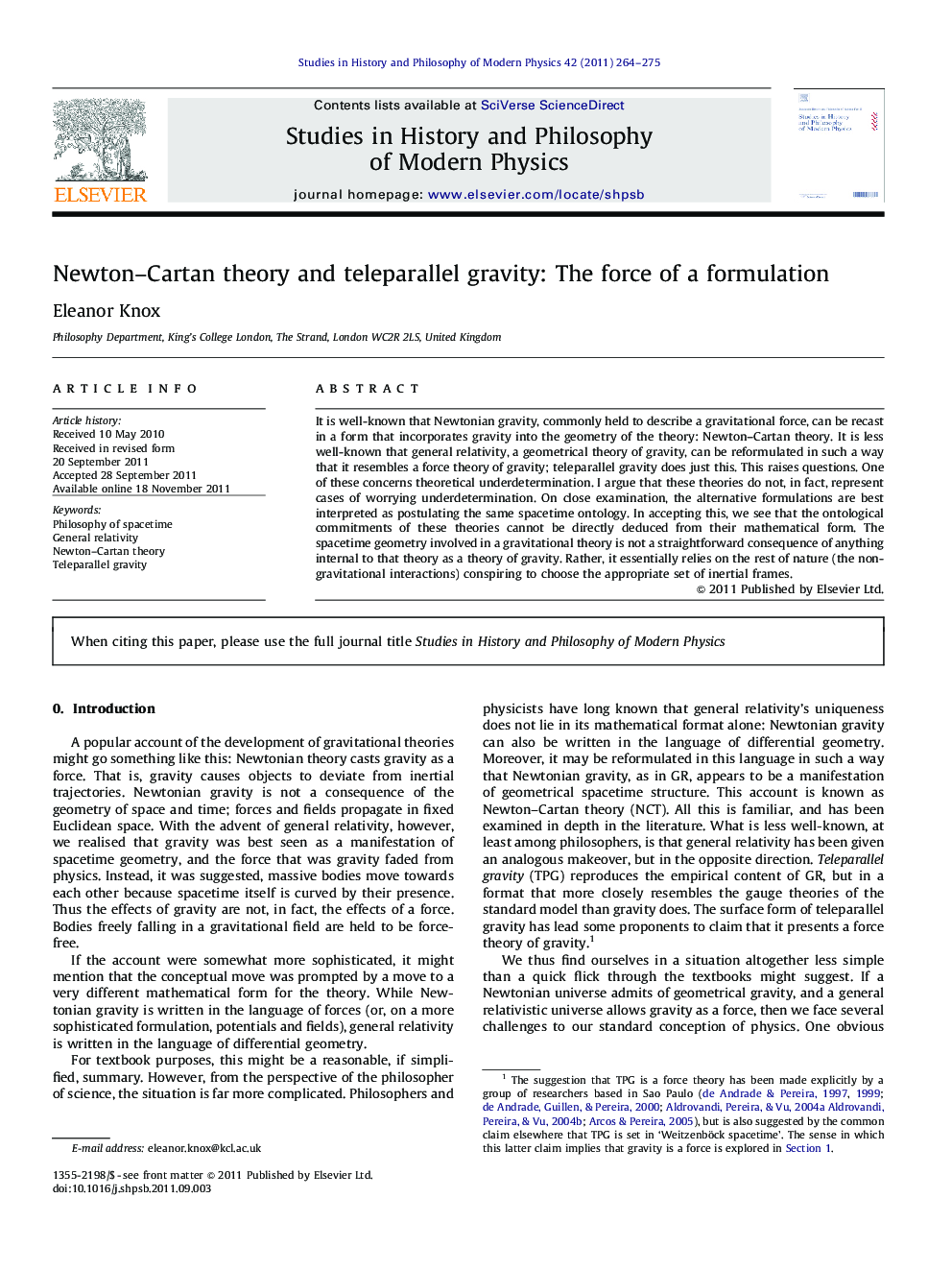| Article ID | Journal | Published Year | Pages | File Type |
|---|---|---|---|---|
| 1161259 | Studies in History and Philosophy of Science Part B: Studies in History and Philosophy of Modern Physics | 2011 | 12 Pages |
It is well-known that Newtonian gravity, commonly held to describe a gravitational force, can be recast in a form that incorporates gravity into the geometry of the theory: Newton–Cartan theory. It is less well-known that general relativity, a geometrical theory of gravity, can be reformulated in such a way that it resembles a force theory of gravity; teleparallel gravity does just this. This raises questions. One of these concerns theoretical underdetermination. I argue that these theories do not, in fact, represent cases of worrying underdetermination. On close examination, the alternative formulations are best interpreted as postulating the same spacetime ontology. In accepting this, we see that the ontological commitments of these theories cannot be directly deduced from their mathematical form. The spacetime geometry involved in a gravitational theory is not a straightforward consequence of anything internal to that theory as a theory of gravity. Rather, it essentially relies on the rest of nature (the non-gravitational interactions) conspiring to choose the appropriate set of inertial frames.
► Examines two apparent cases of empirically equivalent spacetime theories and argues that they do not comprise cases of underdetermination. ► Discusses Newton–Cartan theory, and argues that, under certain circumstances, Newtonian gravity may be thought of as postulating the spacetime structure made explicit in Newton–Cartan theory. ► Discusses teleparallel gravity, and argues that it should be seen as postulating the same spacetime structure as general relativity.
